Halo 5: Guardians is the first time I haven’t loved a Halo game. Though, thankfully, the latest chapter in the sci-fi shooter universe has a few things going for it.
Development studio 343’s second Halo game since taking on the mantle of responsibility from Bungie three years ago tries to tell the story of a hunt. In Halo 5, Master Chief goes AWOL chasing down a mysterious call that seemingly came from his AI ally Cortana. Since he and Blue Team apparently can’t properly communicate this to the UNSC, though, the military organisation responds by sending Spartan Locke and the Osiris Team after him. You’ll switch between playing as the commanders of both teams, alongside three AI companions, in this storyline of chasing after a chase.
You never really know much about what’s going on aside from this, except for vague references to the Mantle of Responsibility that was the basis of a lot of the lore that Halo 4 drew on. Oh, and there are giant Forerunner structures/weapons/technology known as Guardians popping up in dozens of colonies. As the distress calls from those colonies come in, and as you’re either chasing Cortana or Chief, you’ll run from planet to spaceship to planet on one giant, long race that ends unsatisfactorily.
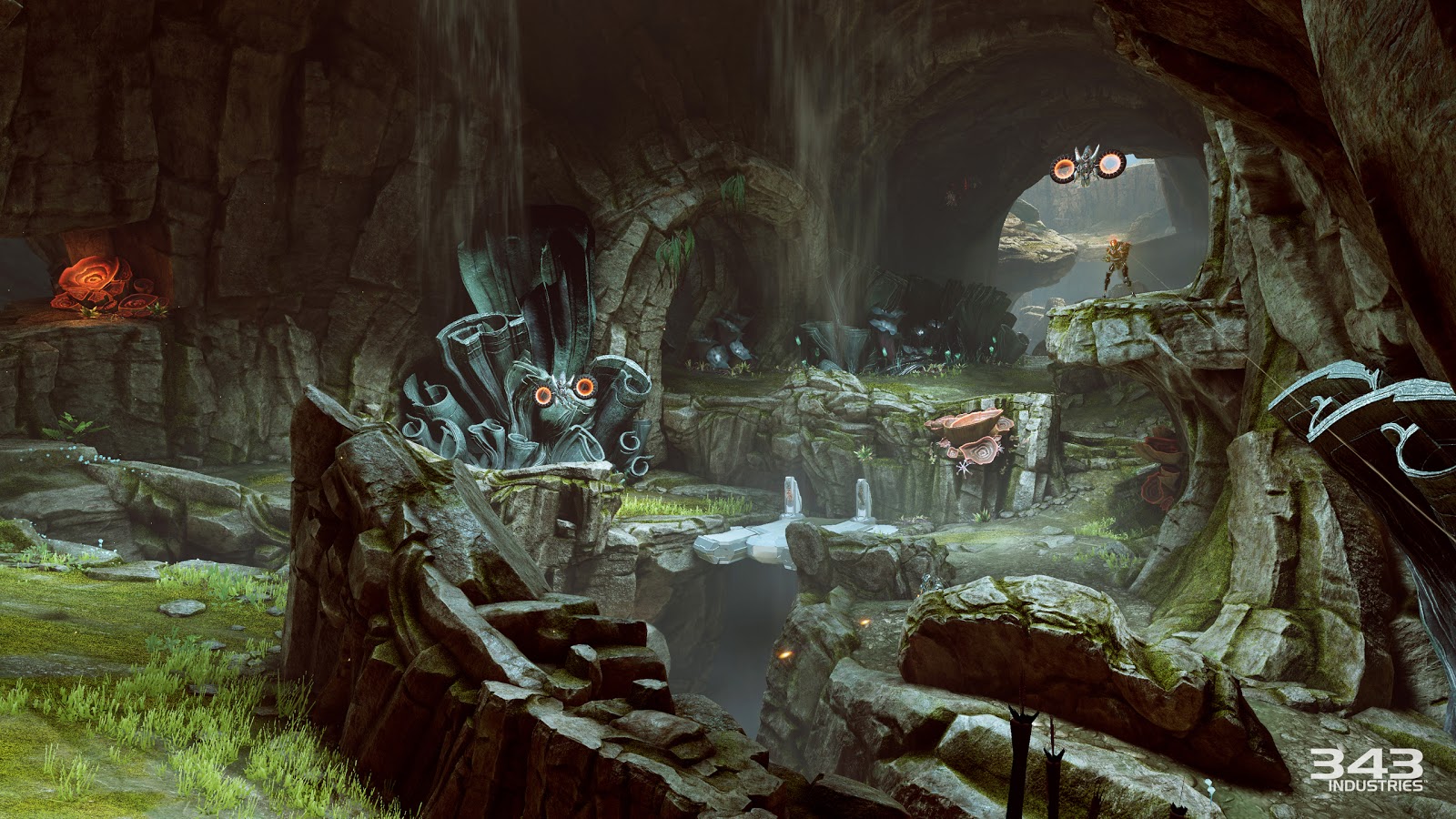
Halo was always about several gameplay staples that Bungie perfected into its Halo formula — the guns, the Covenant military structure, the big battles involving foot soldiers, tanks and Banshees — but 343’s gotta carve its own space while straddling that history. As such, the stories have taken a turn away from the actual Halo rings, pulled back into the core Halo lore of Forerunners versus Humans. In doing so, 343 introduced us to the Promethean enemies in 4, along with the utterly satisfying Promethean weaponry. In the last game they presented more of a love story between Chief and Cortana. Halo effectively became more character-driven. Cortana became more of a centrepiece; more than just a companion or love interest. 343 pushed her as a face of the series, like Master Chief. That fresh approach endeared me to Halo 4, 343’s first foray into an already storied franchise.
But Halo 5‘s campaign is a letdown in comparison to 4‘s successful look into character development. In the place of a well-done storyline you have forced tension between Locke and Chief. You play most missions as Locke, and get some interesting insight into his team’s backstory in the form of casual dialogue as you run through Covenant and Promethean enemies on various planets and colonies. But the hunt itself never delivers on the narrative that Chief has potentially gone rogue, nor on the idea from the game’s commercials that he and Locke have some kind of issue. Midway through the game, there are a few choreographed scenes of a brawl between the two, and Locke cracks Chief’s helmet with his fist. It’s supposed to be an “oh no he didn’t” moment as Chief silently turns to face him, but it’s the only interaction between the two that portrays that tension. Without any substantial build in that narrative direction, the moment falls flat.
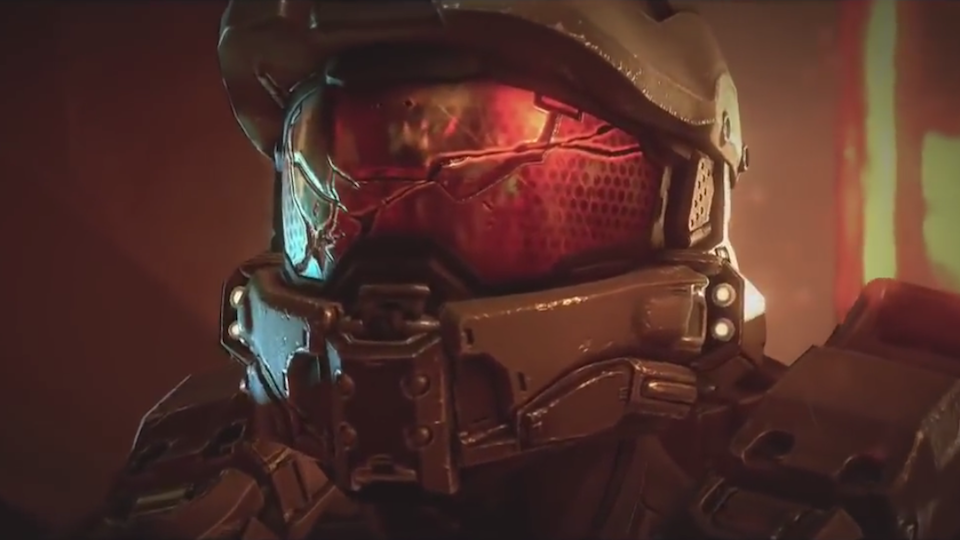
If you enjoy going up against a mostly-Promethean enemy force, battling seemingly infinite numbers of scrambling dogs called Crawlers, Halo 5‘s combat is great. You’ll weave in between tight corridors in spaceships or in between cover on the more open, large-scale maps. You’ll be dealing with enemies on the ground, enemies shooting from cover, aircrafts, turrets and snipers, as per usual. There’s not much in the way of innovation from what you’re used to in a Halo game — you’ll fight duos of Hunters, a variety of differently-skilled foot aliens like suicidal Grunts wielding plasma grenades or camouflaged Elites with one-hit-kill Energy Swords.
There are some vehicular battles — mechs, banshees, warthogs — all of which are components that have always made Halo a solidly-designed game to play, but they’re few and far between, and nothing quite as exciting as the cutscenes make them out to be. All the jetting through space, slamming into spaceships and kicking enemies out of airlocks are only played out in short scenes.
There’s effectively one boss throughout the whole game that you essentially, you guessed it, chase across levels. He regularly shows up trying to block your progress. He divides into copies of himself, and he’s got the age-old boss condition of mostly being vulnerable on his back. He seems like a zealot, which is fitting for a Halo enemy.
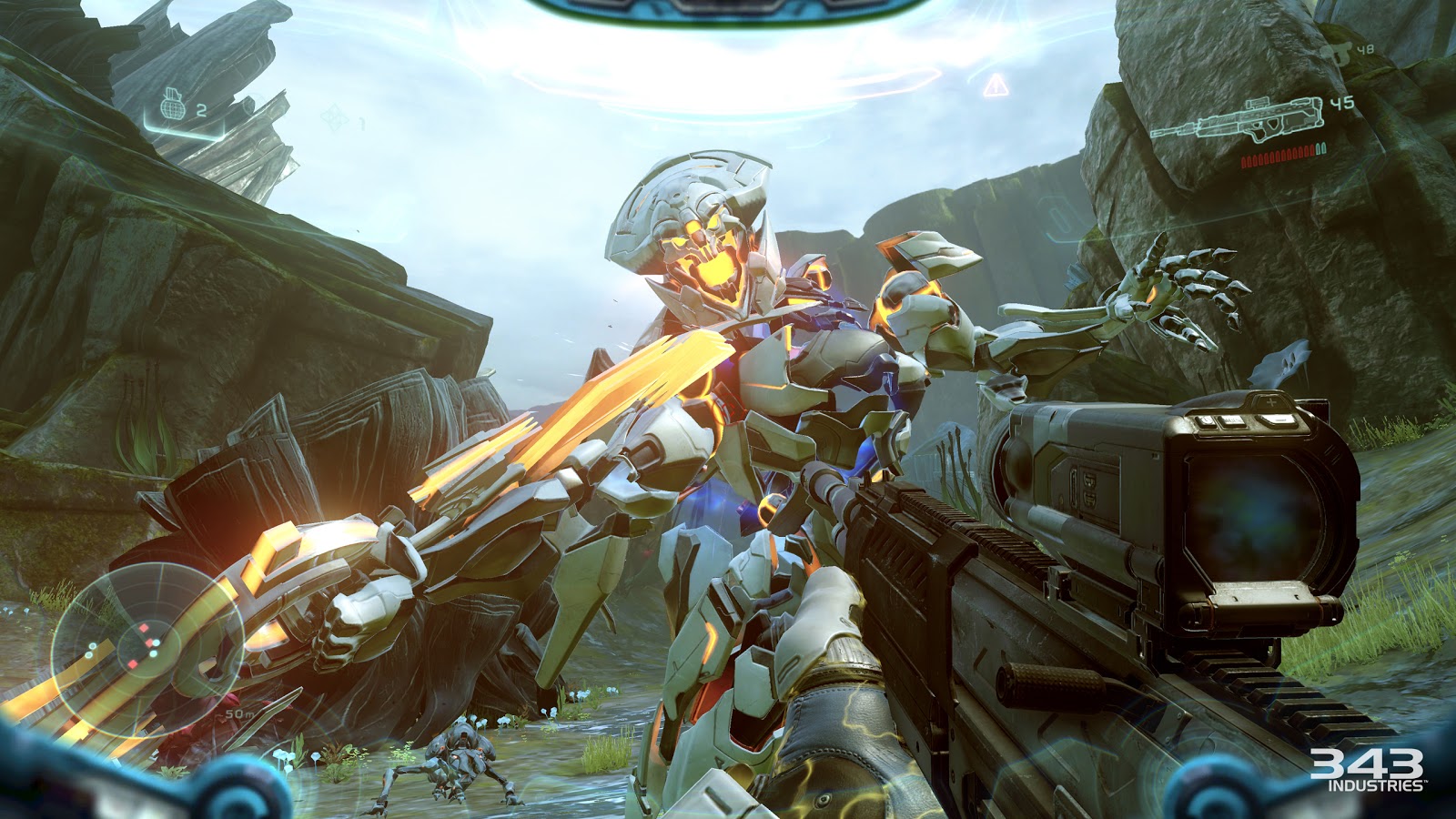
The few Locke-Chief chase sequences end abruptly and without resolution. But I actually like where the Halo story is headed. I like that we’re getting at the root of the wars between races that led to one being mostly wiped out. I like that we’re starting to dissect some of the bigger issues in the Halo universe, beyond just the Flood that held the universe’s main players’ attentions in previous games for so long. The story that seems we’re eventually leading to could be an amazing one. It could reinvigorate the series in the same way the development of Chief and Cortana’s relationship did. We could be exploring the repercussions of the Spartan program and its use of children, which was pretty shady when you think about it. We could be playing through the state of the various technological advances that have both pushed humanity to its future and pulled them back into their past. Or maybe we just investigate more of that Mantle of Responsibility stuff everyone’s been mostly vague about so far. We’re not there yet.
For better or worse, the best parts of Halo 5‘s story are the spoilers at the end of the game.
Of course, Halo 5‘s campaign isn’t the worst. It’s a video game, after all, and it’s Halo. It’s the same Halo weapons and the same Halo vehicles and, hey, Nathan Fillion is back, too. (Remember ODST?) But Stephen put it best when he called the campaign mediocre.
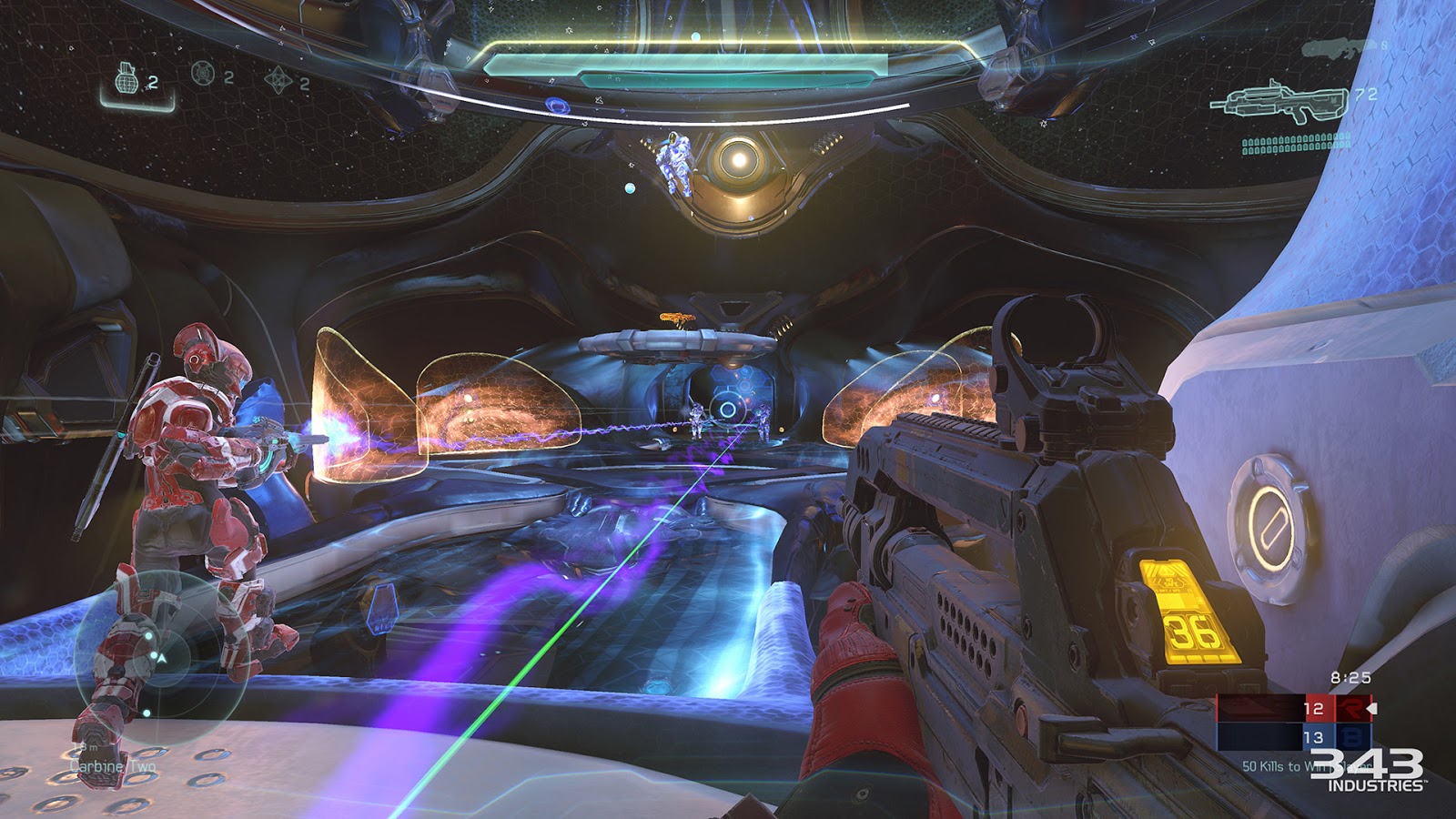
Fortunately, there’s also multiplayer, which is arguably the meat of any Halo game. There are some things you can’t really mess up with multiplayer. With a strong team, any of the Arena modes — Capture the Flag, Slayer, Stronghold, SWAT — are fast-paced and empowering, like most competitive shooters, especially if you happen to be skilled at them.
Arena’s SWAT mode, a headshot-focused round with no motion trackers, is my favourite of the bunch and a fan favourite, too. I’d suggest that it’s the best mode to wrap your head around some of the new mechanics 343 has introduced for Halo 5. The mode boils the game down to its basics: having access to just one gun with unlimited ammunition, everyone has the same advantages and disadvantages. You’ll learn the map’s landscape more intimately, as you’re rapid-fire spawning after each death, hitting the ground running. As you zip around corridors, you’ll start to pick up on patterns of where players are most likely to show up and where they are most likely to camp out. In the place of a radar, you learn to judge the field by the flashes that indicate where your friends have recently died, giving you just the right amount of guidance as to where the fight is going down. The tighter maps are perfect for SWAT’s constant running and the leaping between platforms that you must do to flank enemies.
SWAT, for those too afraid of change, feels like Halo at its purest, most core version of itself.
As any competitive shooter fan will tell you, though, it’s the seemingly small stuff that makes a huge difference. In the place of the “flinch” mechanic three years ago, whereby your reticle will shift upwards after being shot, Halo 5 penalizes players instead with descoping. Halo 5 uses a smart-link system that lets players aim down the sights of any weapon, but if you’re hit, you’ll be knocked out of that view. This can be particularly frustrating for players who rely on sniper rifles or the DMR. On the other hand, you might feel it adds a new dynamic to the sniper-on-sniper duels you’ll often see on Halo maps. Ultimately, anything is better than bloom.
Halo 5‘s new Spartan moves will surely be less divisive than opinions on iron sights and descoping. Some of these moves are useful — you can easily clamber up to high ledges by jumping and grabbing onto them in one satisfying, fluid motion, or dodge in any direction for a quick evasion from fire. Others offer an added bit of strategy to your fight. Halo 5‘s “ground pound” lets you slam down onto unsuspecting enemies from mid-air while the “Spartan charge” lets you tackle an enemy for a mostly-assured kill. The smart-link system lets you hover steadily in mid-air, too, letting you shoot at people from that vantage point.
Ultimately, it’s Halo multiplayer, with a few variations, a shinier face and a few new moves.
Then there’s the new mode, the 24-player Warzone that functions a little like a MOBA without as many confusing bits.
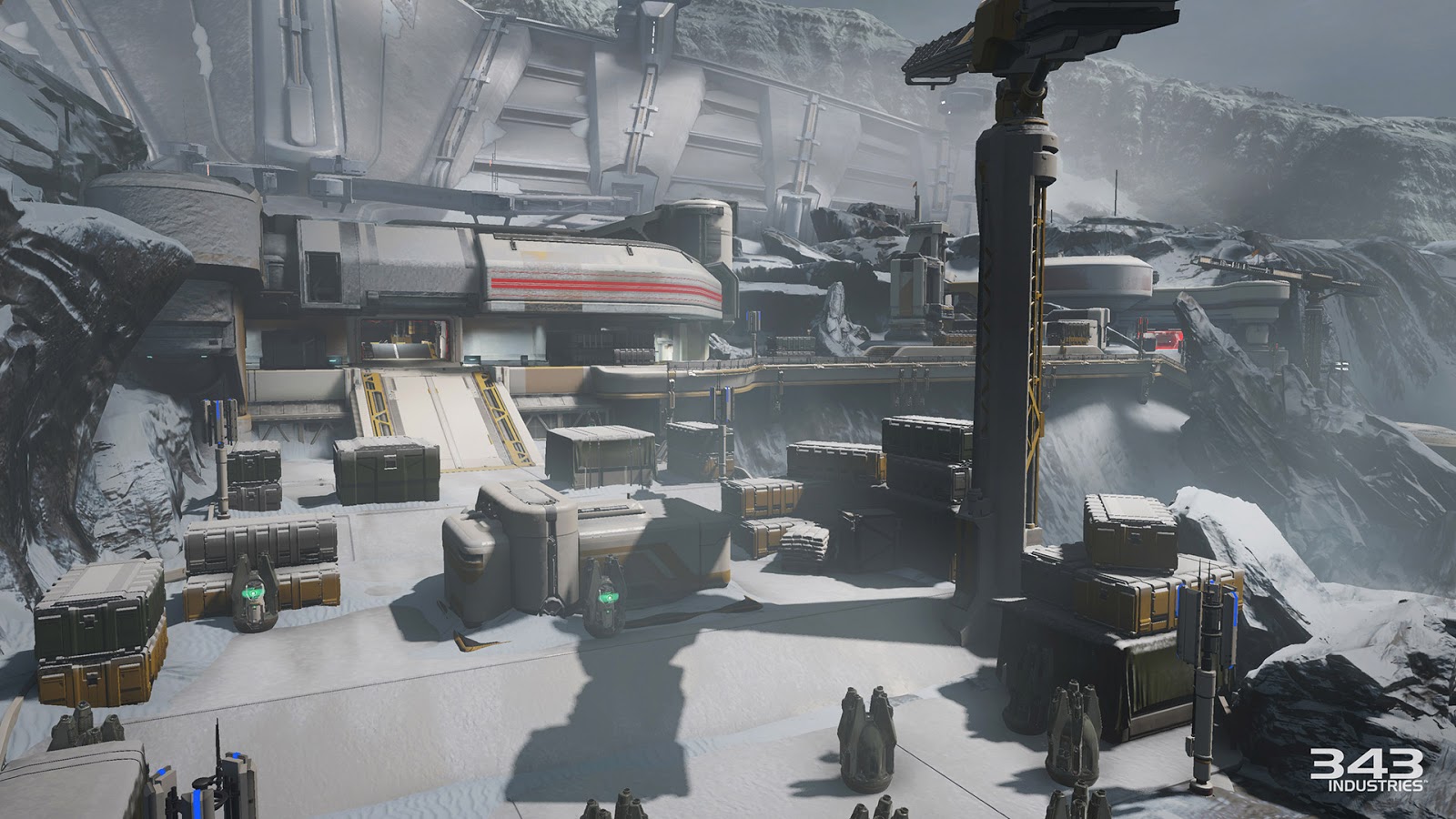
The way to win each round is fairly simple: control bases until you expose the enemy’s core which you promptly destroy, or hit 1000 victory points before the opposing team does.
There’s another system at play, based on a match-to-match levelling system, that will define how each match plays, and it involves a few more rules. You’ll start each match fresh, at requisition rank 1. The more enemies you kill (including farming AI enemies), the more bases you capture, and the more targeted AI bosses you hunt, the more your requisition level will go up. By unlocking those requisition ranks, you unlock the ability to use cards of a corresponding rank number. Those cards represent some kind of drop — weapons, vehicles, armour boosts — that you automatically equip at your next spawn. Obviously, the higher-tiered weapons and vehicles matching the higher-tiered requisition rank are your goal.
Completing matches and earning commendations gets you access to requisition packs full of cards of all kinds. You get them by playing, but you can just buy a requisition pack, too, either with requisition points you earned through playing and selling back unwanted cards or with real money. So, yes, technically, Halo 5 has microtransactions.
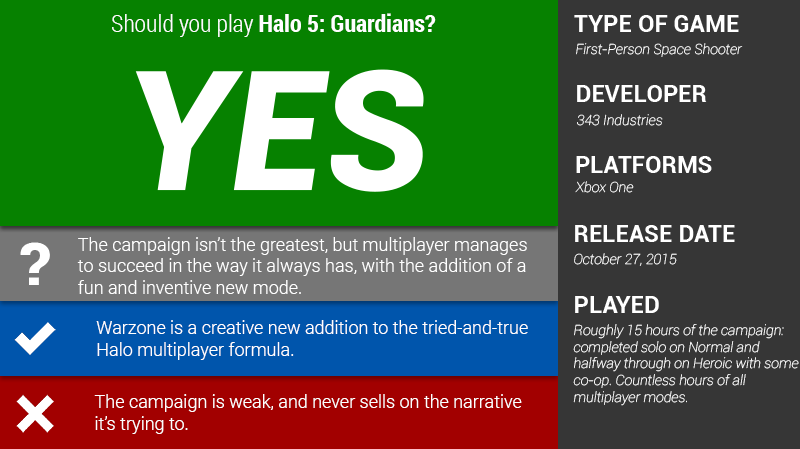
The developers are clearly trying to ensure balance and to avoid giving players a chance to pay to win. They do this in two ways: 1) each deck that you buy is randomised, and 2) if you’ve played one of your better cards during a Warzone match, you have to wait for an energy bar to fill back up before you can play another big one.
So you can’t, for instance, specifically buy 20 tanks and ruin the curve for everyone else. For all you know, half of what you’ll get in a purchased pack are a bunch of useless mongooses. And even if you have loaded up on the best cards through multiple rounds of purchasing, you’ll still have that energy meter controlling how often you can call those cards in. You might be able to grab a speed boost pretty frequently, for instance, but those tanks will take a bit more energy before you can use them again because of their higher-level tier.
It’s too early to tell just how solid a plan to avoid that pay to win scenario this is, but the simple act of ranking up within each match in order to secure a trusty battle rifle or claim a Banshee card is half the fun of Warzone.
The requisition system gives all levels of players a fighting chance, even if they might not be as quick to pick up a fuel rod cannon or as good at staying alive while using one. If you’re having a particularly great round, you’ll feel the immediate reward of your success in the form of your requisition rank and your subsequent access to higher-tiered weapons and vehicles.
It also adds an extra layer of strategy. Calling in a scorpion tank too early in the fight, for example, and thereby sacrificing a rarer card might be the bad call that cost you an advantage later in the match. Warzone is still a shooty, team effort, but that’s not all that it requires for you to secure a win. Making smart decisions about how and when to use your cards could make a big difference in how a match plays out.
If you’re still not enjoying yourself against especially talented shooter players, hunting down AI bosses with a few friends can be equally gratifying. (Unless the other team decides to take on that same enemy and then, well, hey, you are playing a competitive multiplayer shooter mode, after all.) Warzone feels like it’s accessible to players of all kinds of skill levels, in a genuine way and not just as a marketing line.
Warzone is new to Halo, and it might feel unfamiliar enough to longstanding fans that it becomes a turnoff. But with standard offerings provided under Arena, I found 343’s new mode compelling and fresh. Gone are the days of racing to the locations where everyone knows the best weapons spawn. Well, mostly. Some Arena matches will have timed drops of snipers and other prized weapons in specific spots on the map. The challenge in 343’s new vision of Halo multiplayer in Warzone falls on your ability to perform and to manage your deck of cards wisely.
Halo 5 isn’t quite the whole package that Halo fans are used to. The campaign never sells its narrative of a big, tense chase. Instead it’s a drawn-out, forced experience that stops short before it has a chance to get interesting. Multiplayer, for whatever that’s worth to you, is Halo 5‘s saving grace.
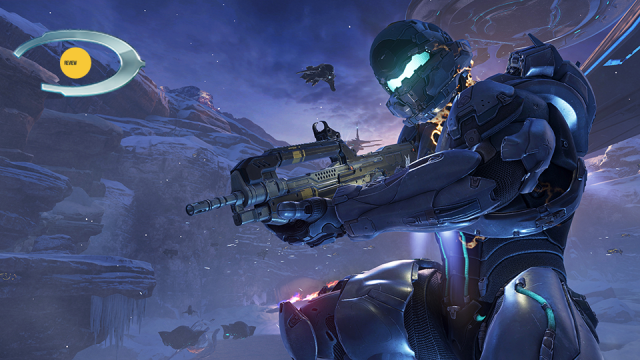
Comments
27 responses to “Halo 5: Guardians: The Kotaku Review”
At first I hated the campaign story but now i’m starting to warm to it. The direction that they are taking is intriguing. My main complain is that there needed to be more backstory of the characters and more blue team. If you didn’t know the lore beforehand then you would have no idea on why the blue team is so special. But I guess that’s what you get if you start playing a game halfway through a trilogy.
Warzone is great, I haven’t even bothered with arena yet
As a huge halo fan I was really worried about what halo 5 would bring. But I stand corrected. Most of the changes 343 have made are really paying off. They have changed the game enough to make it not just feel like the same old halo BUT they have left the core mechanics there so it still plays like halo should. Multiplayer is super addictive with great weapons balance and even though the story is not as good as other halos, campaign is still super fun. There are not many campaigns you can run through with 4 of your mates online, halo has always done that well.
Everyone needs to break their rediculous, repetitive destiny addiction and try this game out. (This included me)
It’s been just over a week since my last destiny hit. Halo has done a fine job of keeping my attention…and it may just keep doing so at this rate.
Just like Halo 4, the dialogue and plot is rubbish, soapie, over-emotional and every moment as dramatic as possible. Also like Halo 4, they go for a big twist, and also like Halo 4, the twist is a well worn cliche that is super obvious.
And also like Halo, the multiplayer just isn’t as fun as any of the previous titles, and the lac of split-screen means you can’t make up for it with couch atmosphere.
The level design in single & multiplayer are poor, some levels have bad Sonic game hidden pitfalls, and most of the mutliplayer game types are about learning the map and the location of power weapons, rather than about being the best. The single player missions are possibly eve worse than the writing. The first mission is fine – go here and rescue a scientist, but it’s downhill from there. Yet even in the first mission, the most exciting action is in the cutscenes before and after you play that mission.
6/10, as the single player is rubbish and the multiplayer is weaker than free ones on PC and other console FPS titles. Halo is now on life support and 343 have one more chance to breathe life into the series or it will be completely dead, except for more freemium garbage that will satisfy the hardcore fankids.
I feel like we are playing different games….
There’s a bunch of Halo 4 haters that have directed there un-reasoned rage at halo 5, and will do so toward halo 6.
@madadam81
The drama really isn’t that over the top. You enjoyed the fight scene between locke and chief…admit it.
Where’s the big twist? in both h4 and h5 pls.
Multi-player is great…a few tweaks to warzone’s assault mode and I’d call it perfect unless you’re bad at online gaming. Even then, it takes time to get good at these things.
The level design is incredible, all the hidden data pads, skulls. Not to mention it’s extremely fun to try and traverse the created terrain with all the new mobility controls.
All halo multiplayer games have been about learning the power weapons and layout…in fact most multiplayer games rely on that. And if you’d rather take those out of the equation, there’s playlists that don’t have weapons lying around.
I don’t understand “The single player missions are possibly even worse that the writing” so I’ll just leave that one.
Yes, the cutscenes are more exciting than the gameplay…i wish to recall upon Halo 2 just after you kill the prophet…a cutscene of chief running from a covenant ship trying to glass him. There’s always been more exciting cutscenes…but the gameplay is great too. Only after about the third play-through do i skip cutscenes because they’re good to watch.
9/10 As the single player reflects greatly on early halo games while still adding a modern and well polished feel to a series I, for one, didn’t anticipate going for this long. Multiplayer boasts a fresh but still lightly familiar ground of play, which is entertaining and full of variety. Halo’s heart may have been replaced, but it’s beating healthily and I would wager it will continue to have success well into Halo 6.
Edit: Major downside that I will agree on is the lack of split screen.
I’m up to the last campaign mission and unless something seriously dodgy happens with the ending I can’t see why everyone is painting the campaign as bland or missing the mark. It’s pretty standard fare, on par with all the other games with the exception of CE. I also don’t get why people think the whole ‘hunt him down’ narrative doesn’t play out well, seems fine from where I sit. Were people expecting Chief and Locke to hate each other?
Also, who gives a flying shit about split screen multiplayers in 2015 (yes, that’s a rhetorical question) get on gold and play with friends, it’s much better than huddling around a TV and having a graphically compromised experience. People are saying that the lack of this feature is a deal breaker, you have got to be kidding me. Perhaps I’m just too old, but I don’t get the rage over this.
I think people expect way too much out of these games, at its core this is a highly polished FPS with a decent story, replayable level design, and fantastic controls paired with great visual fidelity and amazing art direction. What more do people want ffs!
My only real gripe is that the Warden character was clearly designed with coop in mind, he can be a real prick to take down with 3 AI companions.
As for multiplayer, apart from the fact that my 33 year old reflexes need time to warm up whenever I play and until I hit the sweet spot I get rammed mercilessly, it’s as good as ever. Warzone is kick ass, and to my surprise the whole REQ system seems to be well balanced.
All in all, I reckon this is a fine entry in the series.
Pizza, beer, and friends over playing Halo > Pizza, beer, and headset playing Halo.
No splitscreen = no couch co-op with my wife. This isn’t a big deal since we already have a second Xbox and TV to play Destiny together, but apparently the Halo 5 netcode shits itself when two people try to play on one connection. This isn’t just a crappy Aussie internet issue, it’s happening everywhere.
Wow, that bug really needs to be fixed. They are probably working on it. Apart from a couple of times when my multiplayer match stats”could not be retrieved at this time”, the netcode, servers, etc all run really well.
I’ve unfortunately had the same issue with Master Chief Collection. It was lousy when it first came out, with poor matchmaking and broken games. We went back a few weeks later and were able to paly a little campaign together. Later we went back against and couldn’t get into a match with each other.
I’m more single player think I’ll wait in a price drop
I am only mid-way through but am not seeing the promised storyline of Locke going after the MC, it seems to be more like “He must have his reasons, lets go find out why he went AWOL, maybe he needs help”
I find the team approach takes away from what Halo was, the MC going alone against an immense army, now it feels like you can stand back and have the fireteam do all the work, and if you do get taken out, just call for help.
Still enjoying it but it feels a bit hollow.
Pleasedon’tsaymultiplayerpleasedon’tsaymultiplayerpleasedon’tsaymulti- aw God dammit.
Relax, I finished it last night and the campaign is pretty decent and the ending is fine considering that this is part 2 of a 3 part story arc. I really don’t get why people are wailing on the campaign, I’m putting it down to inflated or unrealistic expectations. I can’t wait to play it again on legendary with a mate of mine online.
I’m just confused by anyone liking promethean weapons…. They’re just too similar to the human ones for me.
Also based on what I’ve played through so far, fighting the Covenant is still the most fun.
Yep Promethean weapons are mostly just human weapons reskinned so don’t know what th e point of them are.
The campaign to me was ruined by the fact you basically have to fight the same boss over and over and over again, oh but if we keep adding more of him in it’ll be different right? wrong.
You know, I’m actually enjoying this round of Halo, at least more than I did than Halo 4 (and I had read the Forerunner and Kilo-5 trilogies and new what was going on beforehand). The mechanics of Halo 5 feel much smoother and fleshed-out with the new moves like the shoulder-charge and directional boost. The weapons somehow feel better too. Not sure how half of them gain anything with iron-sights that only zoom in a cast a pretty hologram on the display (looking at you, Fuelrod Gun), but it helps with others like the Forerunner Shattergun, which tightens the spread over distance, and the Covy Concussion Rifle, which charges the shot and sticks it to enemies like Plasma Grenades. That said, the aesthetic of the weapons feels like more thought has been put into the design, such as the way the Forerunner guns’ sights split open to surround the player’s view as if the pieces are generating a suspended hard-light magnification lens between them.
I’m not minding the plot too much, though the levels feel shorter and there are a few too many large open areas that are little more than stopovers in the journey to fight a few waves of Forerunners or Covies before proceeding.
The lasting gripe that I have, though, is this: No other Halo game really had any big cutscenes beyond Chief or Arby running for their lives from the flood or a huge plasma beam, or falling into a bottomless pit, or whooshing out of an airlock, or just conversing as a new Halo ring rises from the fog. You know, things that were either too mundane or different to wedge gameplay mechanics into, or were simply beyond the ability of the console at the time. Halo 5 changes all that and presents us with stunning cutscenes like our two protagonists duking it out and then dashing across collapsing platforms over lava, and all I can think as the controller sits unused in my hands is, “Wow! That looks amazing. I WISH I WAS DOING IT!”
Where’s that annoying Halo fanboy? You know, the one that’s always shouting about his opinions on Halo.
Sorry…late to the party. Was playing Halo.
It’s like Halo 2 all over again for me. Really enjoyed the campaign with an ending that frustrates and excites at the same time. But my god that multiplayer is impressive. Warzone is great and the arena level designs for SWAT are perfect. 8.5/10
Multiplayer is great but it’s missing a lot of the basics from a Halo game. Warzone sucks if your not in a fireteam. It’s also not really balanced. First team to use a Banshee or Scorpion wins.
Nothing a spartan laser cant fix, I think its more of a case of the side that uses REQ’s well wins.
I was enjoying the campaign but hated the way it ended TBH
I’ve never played a Halo game outside of some party time multiplayer with the 2nd game & this game doesn’t seem to be the one to sell me on the franchise as something that I must get into.
If given the chance, I would more than likely play some multiplayer at a friend’s place but it’s not the game that would make me rush out to get an Xbone unfortunately.
At least they’re trying to make things fresh & not just doing the nearly yearly COD churn-out stupidity.
Warzone isn’t too bad, better than learn the power weapon Arena modes (and people drop out of games very quickly leaving many games 4 v 3 then 4 v 2), but most of the levels in both campaign & multiplayer seem poor. Nothing is as fun as stuff like Sword Base – it was the same with Halo 4. Also, there are countless free and cheap online PC shooters that are much better than Warzone. Also, Australia lag seems to be worse than these PC games as well.
I’d give it roughly a 6/10, still fun to be had even though you could have more fun for less by buying something else.
Worst thing for me is that they didn’t learn from Halo 4’s terrible story and use of the most overused sci-fi and soapie tropes to generate their shocking twists, that made the twist from Halo 5 as painfully obvious as Halo 4’s. Also, AI’s going crazy and evil was also old and overused when Marathon came out, but by the time Halo 4 & 5 came out, it was a dead horse 343 could not stop flogging.